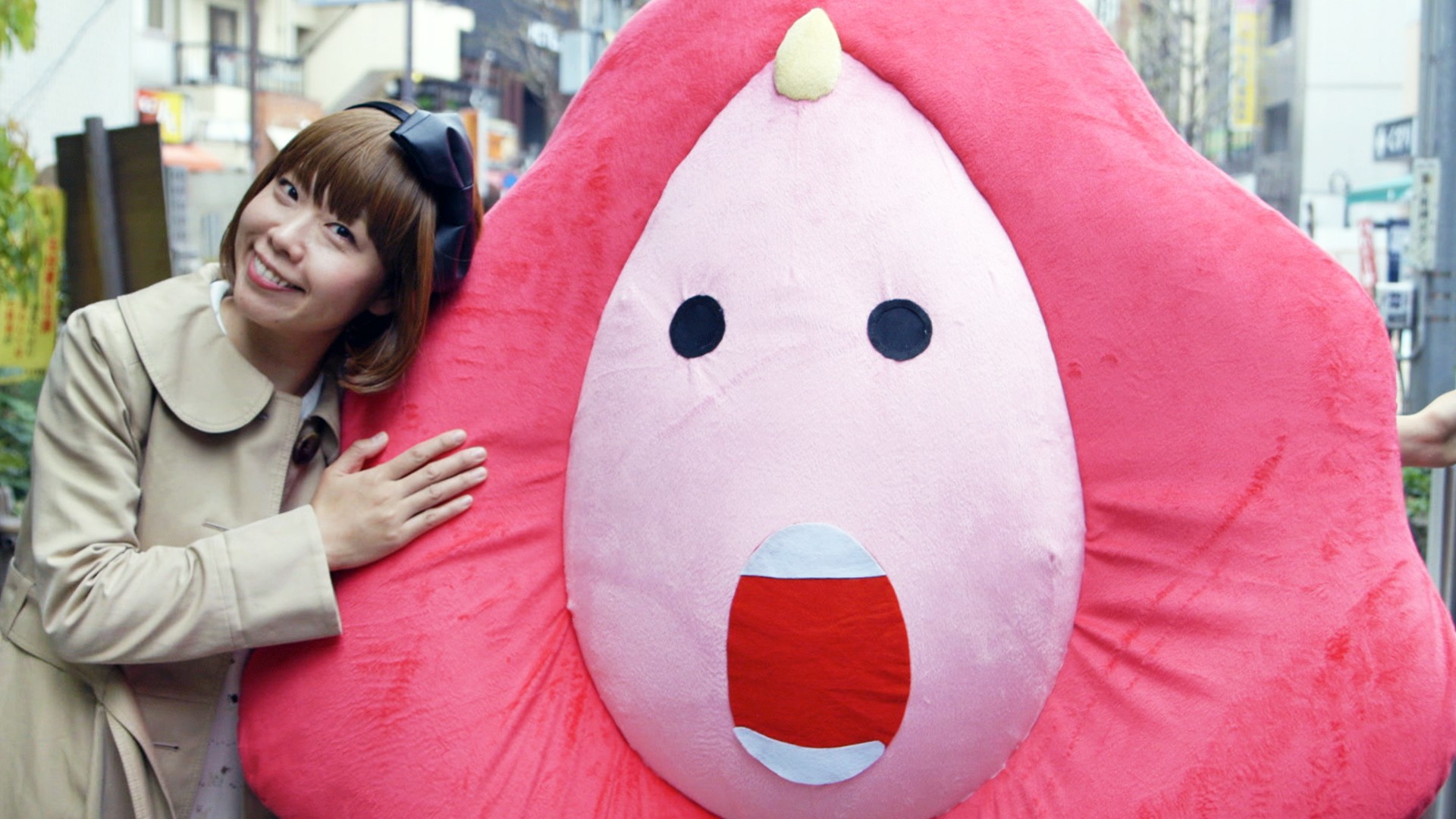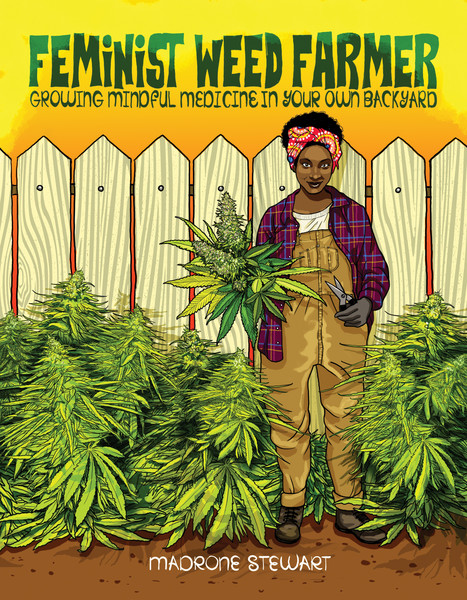Photo by Jayme Burrows via Stocksy
The weed industry has long grappled with allegations of sexism and sexual harassment —and nowhere is that more pronounced than the farms in California where legal marijuana is grown. The women who work there are often referred to as “trim bitches,” and some have alleged that sexual assault and abuse are rampant. This is enough to make any female pot enthusiast feel like the fast-growing cannabis industry is no place for women. Enter Madrone Stewart, a former professional grower and the author of the upcoming book Feminist Weed Farmer.Her upcoming book isn’t just a call to arms for recreational pot smokers—especially women, people of color, and LGBTQ people—to start growing their own weed. It’s also a step-by-step guide aimed at demystifying the gardening process (assuming, of course, that growing your own cannabis is legal in your home state).“The industry is completely market-driven and overwhelmingly dominated by capitalist, straight, white, cis men,” Stewart writes. “I love my straight white brothers, but I do not think it is fair that they have come to control this industry, especially because of the disproportionate incarceration of black and brown people for cultivating and selling pot throughout the span of the war on drugs.”Over email, Stewart tells me that she wants to speak to communities that have been traditionally excluded from the weed industry because “representation matters.” At California Growers Association meetings, she was often the only woman of color in the room—and she remembers feeling “painfully self-conscious” about it.
Watch: Who's Afraid of Vagina Art?
“Maybe someone will pick up the book and see my picture and think, Hey she looks like me, she feels familiar, and for some reason that makes me feel like I can do what she is doing,” Stewart says. “Maybe somewhere in the reader’s subconscious they thought, ‘Pot growing is for bros,’ and I want to get across that pot growing, tripping on LSD, or whatever can be for all people!”Stewart initially learned to grow pot from her boyfriend after she dropped out of her PhD program and moved north to Humboldt County, the Californian epicenter for cannabis farming. “I was living with a boyfriend and I had a huge fruit and vegetable garden,” she explains. “My boyfriend also had his own garden, but all he grew was pot. At some point during the summer he decided to get rid of a bunch of plants and I asked if I could have two or three for my garden.”Stewart replanted them in a spot where pests had destroyed some cabbages and didn’t think any further of it. While her plants stayed small, she was amazed by how well her boyfriend’s did when showered with love and TLC. “The following year I watched everything he did very closely and learned a lot from him about how to sufficiently care for a cannabis plant.”She later set up Purple Kite Farms, where she primarily employed women and queer people. “When I moved to Humboldt I brought with me an awareness of power and privilege. It was immediately clear to me who owned the farms and who worked on them. Men owned farms, women worked on them,” she says. When the market for wholesale cannabis collapsed, Stewart realized she could no longer turn a profit from small-scale cultivation—and turned to book-writing instead. Feminist Weed Farmer offers a seed-to-bud overview of the growing process, including tips on how to get started from seed (“growing from seed is great because the plants are fairly hardy”) or clones (a branch clipped off of another plant), when to start fertilizing plants (“if the deep green of the plant leaves begins to fade or lower leaves start yellowing, it is definitely time to feed”), and harvest-time recipes for everything from infused lube, salves, and even cannabis juice made from discarded leaves.“One day I made a quart of juice and sipped on it all morning. I went to a friend’s house for a meeting of our meditation group,” Stewart recalls in her book. “As the meeting started, I realized that I was really high.”Her biggest tip to would-be growers is to simply give it a try. “I think the biggest mistake is procrastination and then never trying. I am a huge fan of diving in. Just get started, commit to following through on the project and figure out the kinks along the way.”“Connect with other women growers either in person, via the internet or both,” she continues. “Also, make your grow a reflection of who you are. At my farm, I hung prayers flags everywhere and strung up beads. However, as long as growing is illegal or feels dangerous, I believe there will be a masculine association with the discipline. It attracts wannabe thugs and cowboys. Hopefully over time that association will be eroded, but it will take lots of women growing their own amazing pot to get us to that place.”Feminist Weed Farmer is out November 2018 on Microcosm Publishing.
Feminist Weed Farmer offers a seed-to-bud overview of the growing process, including tips on how to get started from seed (“growing from seed is great because the plants are fairly hardy”) or clones (a branch clipped off of another plant), when to start fertilizing plants (“if the deep green of the plant leaves begins to fade or lower leaves start yellowing, it is definitely time to feed”), and harvest-time recipes for everything from infused lube, salves, and even cannabis juice made from discarded leaves.“One day I made a quart of juice and sipped on it all morning. I went to a friend’s house for a meeting of our meditation group,” Stewart recalls in her book. “As the meeting started, I realized that I was really high.”Her biggest tip to would-be growers is to simply give it a try. “I think the biggest mistake is procrastination and then never trying. I am a huge fan of diving in. Just get started, commit to following through on the project and figure out the kinks along the way.”“Connect with other women growers either in person, via the internet or both,” she continues. “Also, make your grow a reflection of who you are. At my farm, I hung prayers flags everywhere and strung up beads. However, as long as growing is illegal or feels dangerous, I believe there will be a masculine association with the discipline. It attracts wannabe thugs and cowboys. Hopefully over time that association will be eroded, but it will take lots of women growing their own amazing pot to get us to that place.”Feminist Weed Farmer is out November 2018 on Microcosm Publishing.
Advertisement
Watch: Who's Afraid of Vagina Art?

“Maybe someone will pick up the book and see my picture and think, Hey she looks like me, she feels familiar, and for some reason that makes me feel like I can do what she is doing,” Stewart says. “Maybe somewhere in the reader’s subconscious they thought, ‘Pot growing is for bros,’ and I want to get across that pot growing, tripping on LSD, or whatever can be for all people!”
Advertisement

Advertisement
